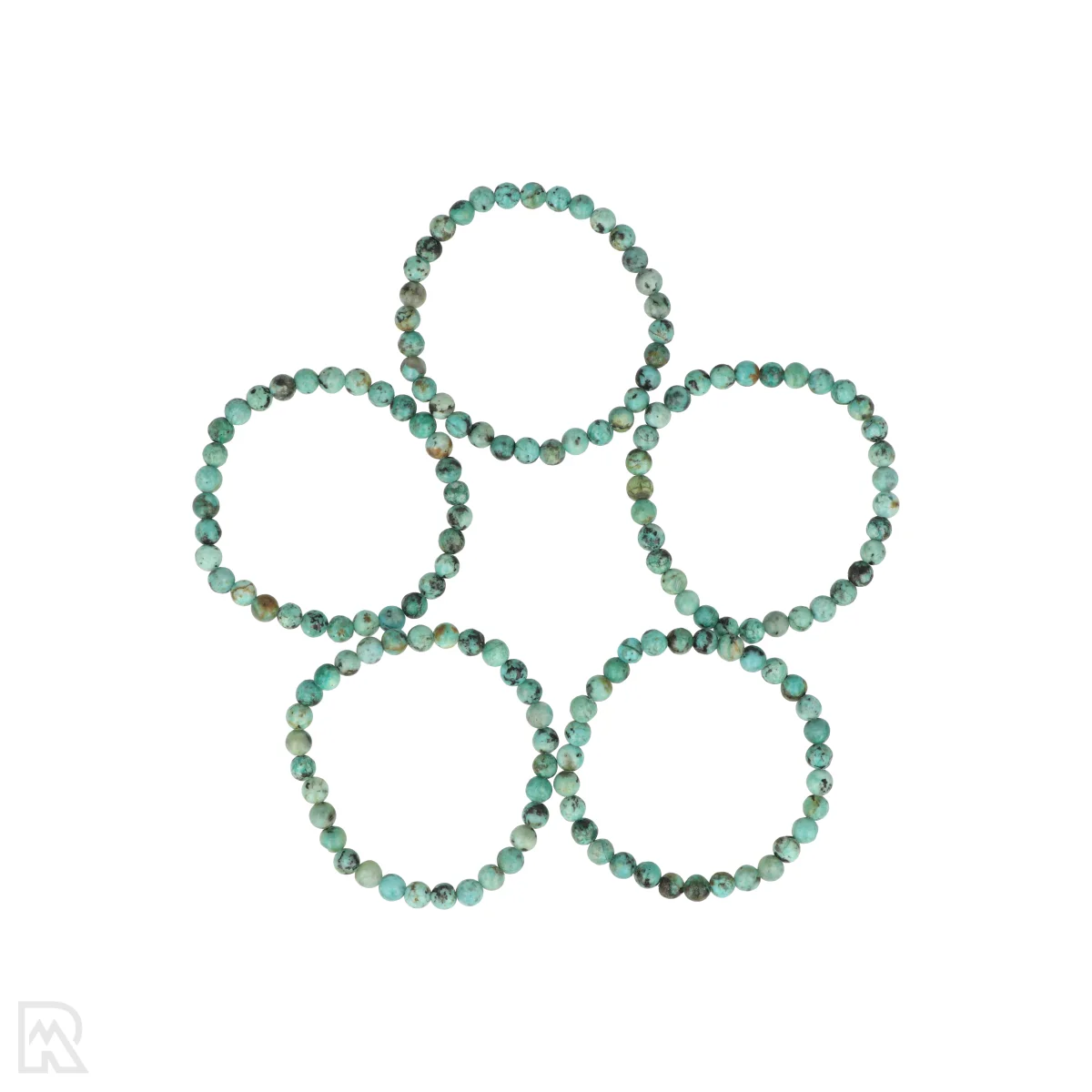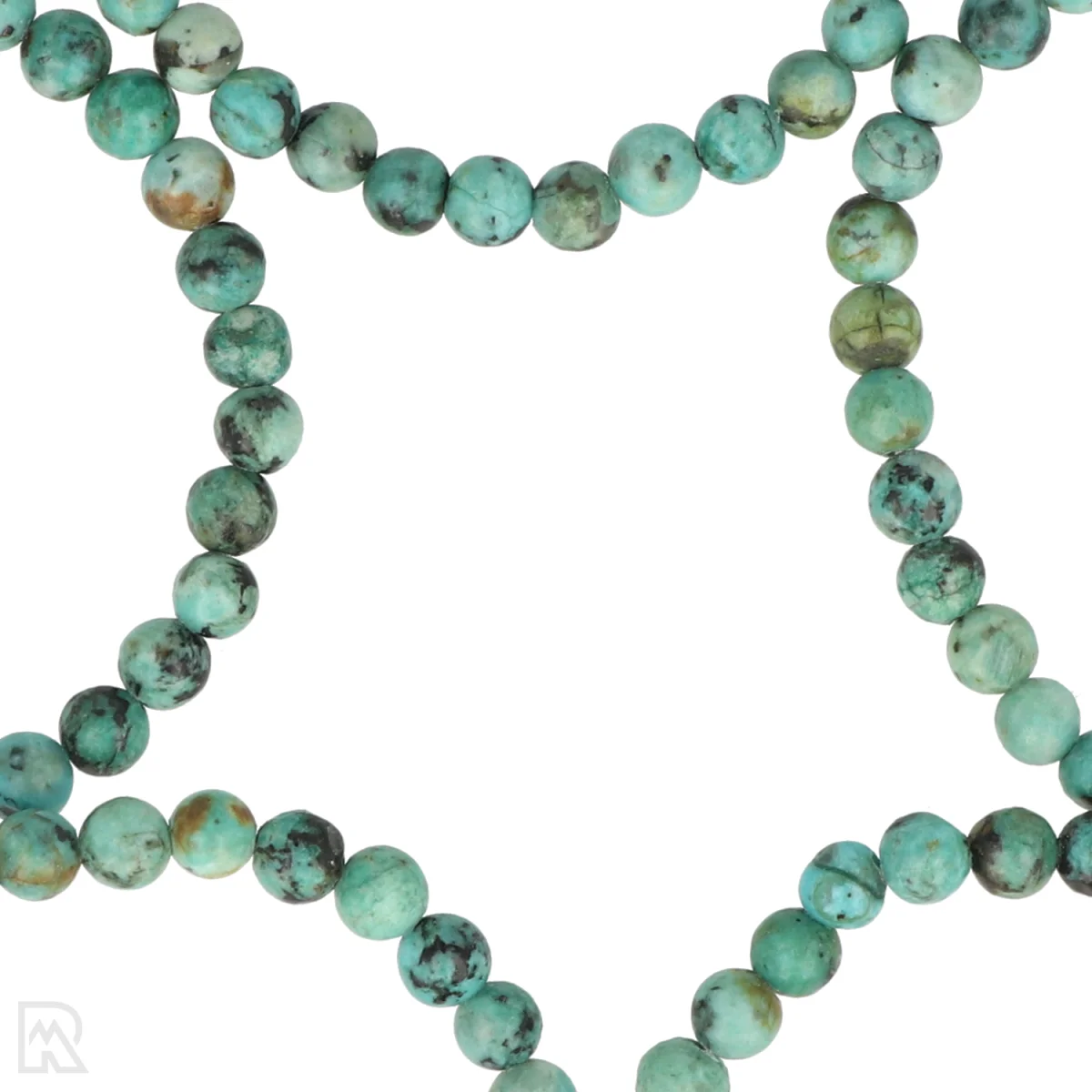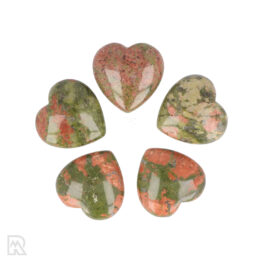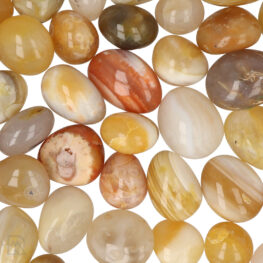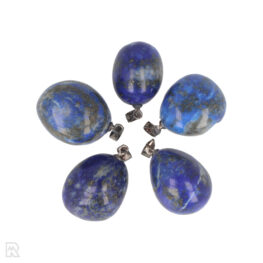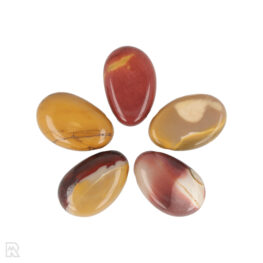| Gewicht | 0,004 kg (4 gr) |
|---|---|
| Sales Unit | |
| Type | |
| Size | |
| Dimensions (±) | 12 - 13 cm (circumference) |
| Form | |
| Origin | |
| SKU | 8544 |
African Turquoise Children's Bracelet | AA - 4 mm
African Turquoise Children's Bracelet in 4 mm
Turquoise
Turquoise is an opaque, blue to blue-green phosphate mineral that has been valued as a gemstone for thousands of years. The colour results from the presence of copper, while iron sometimes causes a greener hue. Turquoise often occurs with dark matrix lines of surrounding rock, giving it a distinctive appearance. The stone was named after the Turkish trade routes through which it was introduced to Europe.
Major deposits of turquoise are Iran, the United States (especially Arizona and Nevada), China and Egypt. The mineral forms in dry, desert areas as a secondary mineral in the oxidation zones of copper deposits. Its chemical formula is CuAl₆(PO₄)₄(OH)₈-4H₂O. Turquoise has a hardness of 5 to 6 on the Mohs scale.
Sources:
Mindat.org, Gemdat.org, Wikipedia - Turquoise
These faceted, ball or beaded bracelets are strung on a sturdy, double elastic, making them suitable for different wrist sizes. Our bracelets range in bead diameter from 4 mm to 10 mm, with the wrist circumference varying slightly by size. The smaller sizes have a wrist circumference of about ± 160 mm, increasing to ± 180 mm for the larger ones. For children's bracelets, the wrist circumference is the smallest in our range, which is ± 12 to 13 cm.
We also offer split bracelets, where the split used ranges from 5 to 10 mm. These bracelets are also strung on sturdy, double elastic, with a circumference of approximately 16 cm to a maximum of 18 cm. Please note that there may sometimes be a different type between the pieces of split used. Our split bracelets are sold per 10 pieces in most cases, but there are exceptions.
Please note that we do not always have every size of every variety in our range.
